The Merida Big.Trail has been totally updated for 2021, moving away from plus tyres to adopt 29er wheels and long, slack and low trail-friendly geometry.
A collaboration between Merida’s UK dealers – a market that has been “one of the driving forces in Europe if not in the world when it comes to taking hardtails on demanding trails” – the bike has been designed specifically as a “fun-packed, versatile, capable and rewarding trail hardtail” that “combines the simplicity and low maintenance of a hardtail with the capability and the fun factor of a long travel bike”.
The range starts at £800 / €849 / $1,249 for the Big.Trail 200, rising to £1,500 / €1,599 / $2,299 for the Big.Trail 600.
The head tube angle is a raked out 65.5 degrees across all sizes. This is paired with a 75.5-degree seat tube angle across all sizes, which will get your hips over the bottom bracket for comfortable and efficient seated climbing.
A slack head angle and steep seat angle is no good if it’s not paired with a long reach and, on a size large, you get a 455mm reach.
| Frame Size | S | M | L | XL |
|---|---|---|---|---|
| Seat tube (mm) | 380 | 410 | 430 | 450 |
| Top tube (mm) | 579 | 600 | 622 | 645 |
| Head tube (mm) | 95 | 100 | 110 | 120 |
| Head tube angle (degrees) | 65.5 | 65.5 | 65.5 | 65.5 |
| Seat tube angle (degrees) | 75.5 | 75.5 | 75.5 | 75.5 |
| Chain stay length (mm) | 435 | 435 | 435 | 435 |
| Bottom bracket drop (mm) | 73 | 73 | 73 | 73 |
| Fork length (mm) | 420 | 420 | 420 | 420 |
| Stack (mm) | 636 | 641 | 650 | 659 |
| Reach (mm) | 415 | 435 | 455 | 475 |
| Wheelbase (mm) | 1150 | 1172 | 1196 | 1220 |
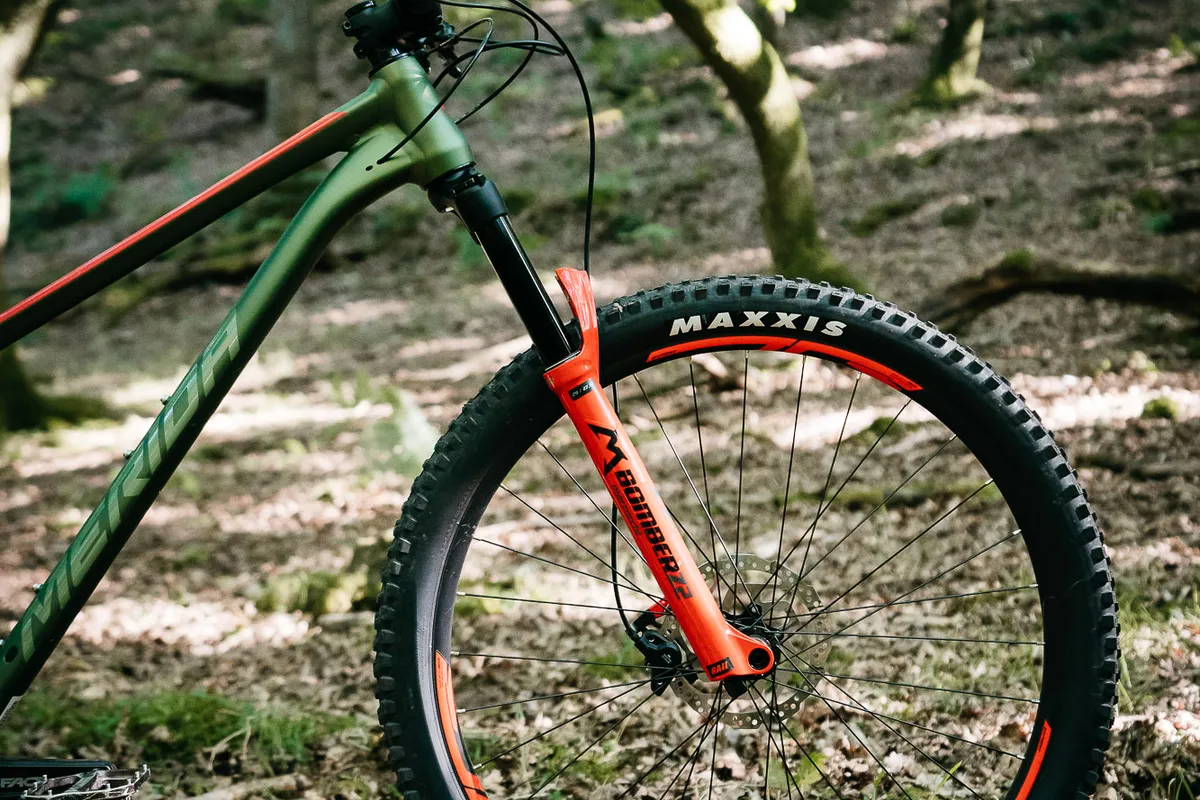
Designed to work best with 120mm to 140mm travel forks, the bike clearly moves away from the more all-round focus of the previous generation in favour of rowdier trail riding.
The bike pairs clearances for tyres up to 2.5in wide and sees capable aggressive tyres matched with wide rims specced across the board.
The three cheapest bikes are built with Merida’s own Comp TR (tubeless-ready) rims, which have a bang-on-trend 29mm internal width, giving modern trail tyres a nice squared-off profile. The top-end bike features Merida Expert TR rims, which drop a bit of weight.
The tyres on the top two bikes are tubeless ready, and we assume it will be the same on the other two.
This means that, to set the bike up tubeless, all that would be required is a pair of valves, tape and sealant.
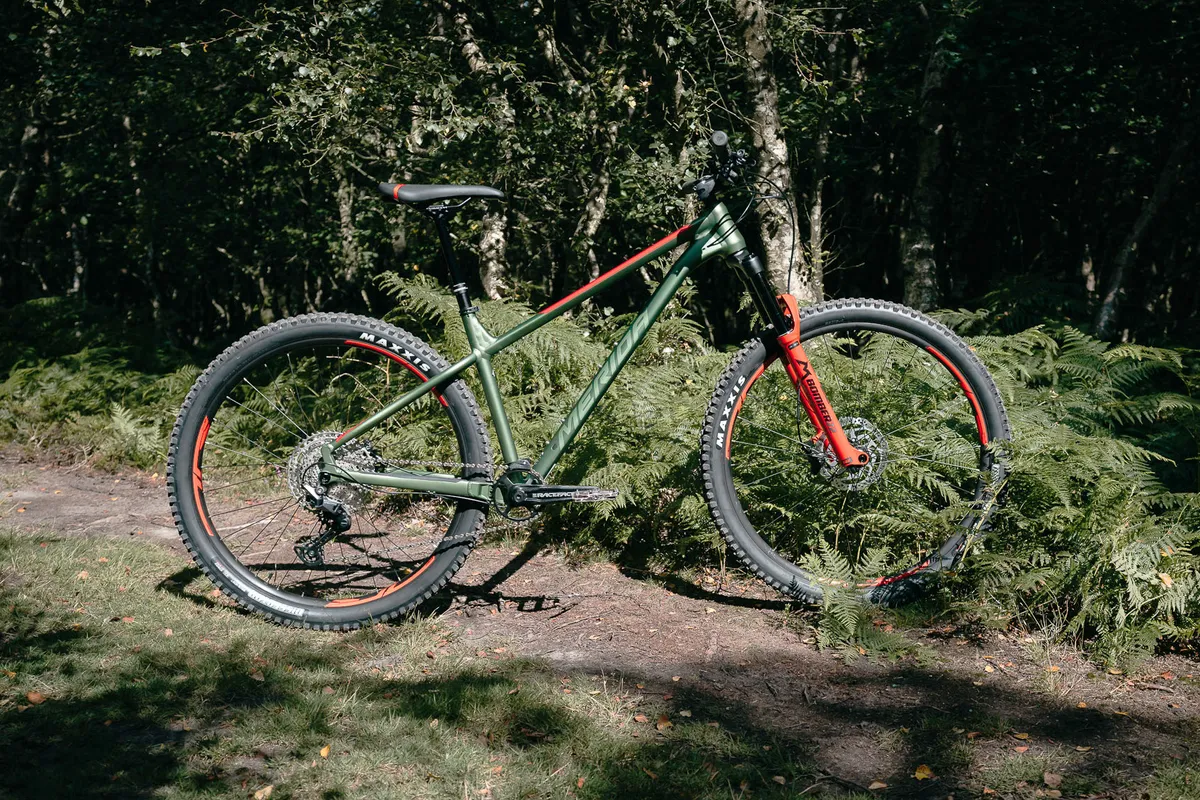
On the Big.Trail 400, 500 and 600, 150mm travel droppers are fitted on all sizes except small, which gets a 125mm travel dropper.
All bikes are built around a 1x Shimano Deore drivetrain, with the cheapest models getting the latest 10-speed version of the groupset, moving up to the 12-speed version on the top-end bike pictured.
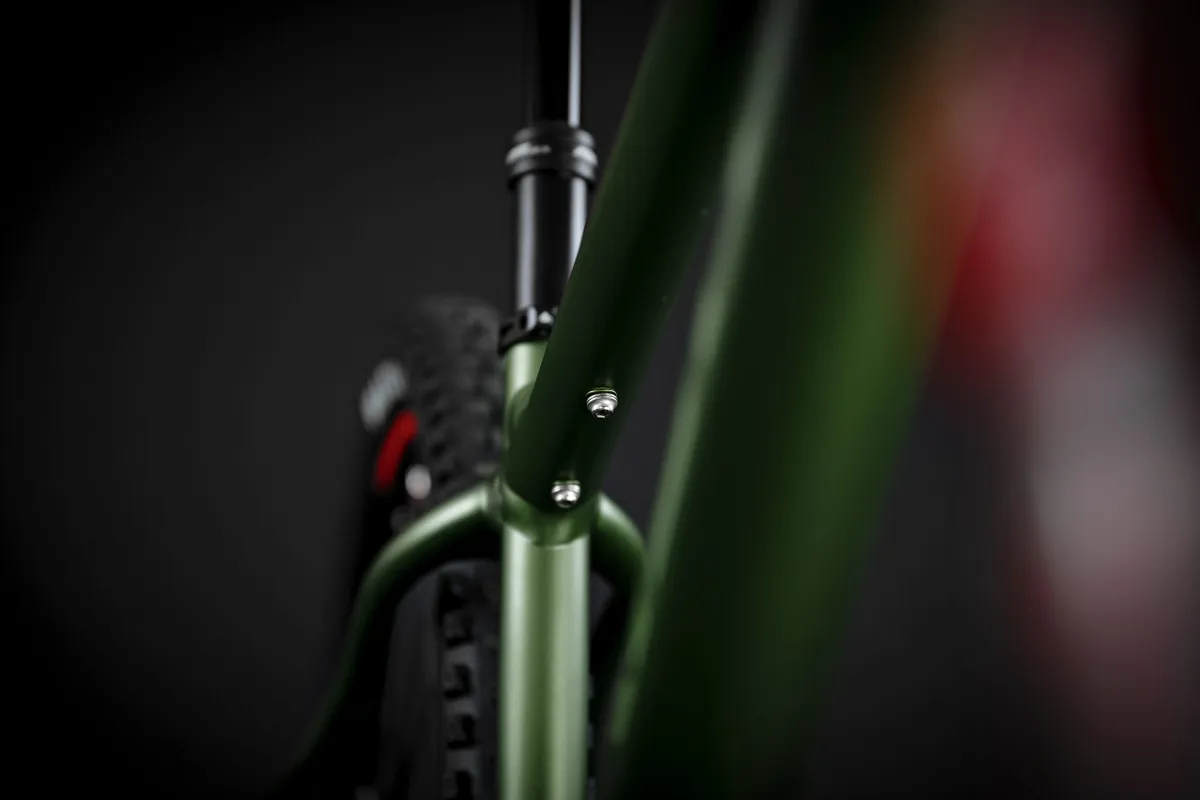
There are two bottle bosses on the down tube and a nifty additional “Trail mount” at the rear end of the top tube. Merida suggests this can be used as an additional water bottle mount or to hold tools.
We have no doubt that, similar to the top tube mounts seen on an increasing number of gravel bikes, an enterprising soul will use this as a neat mount for a bikepacking framebag.
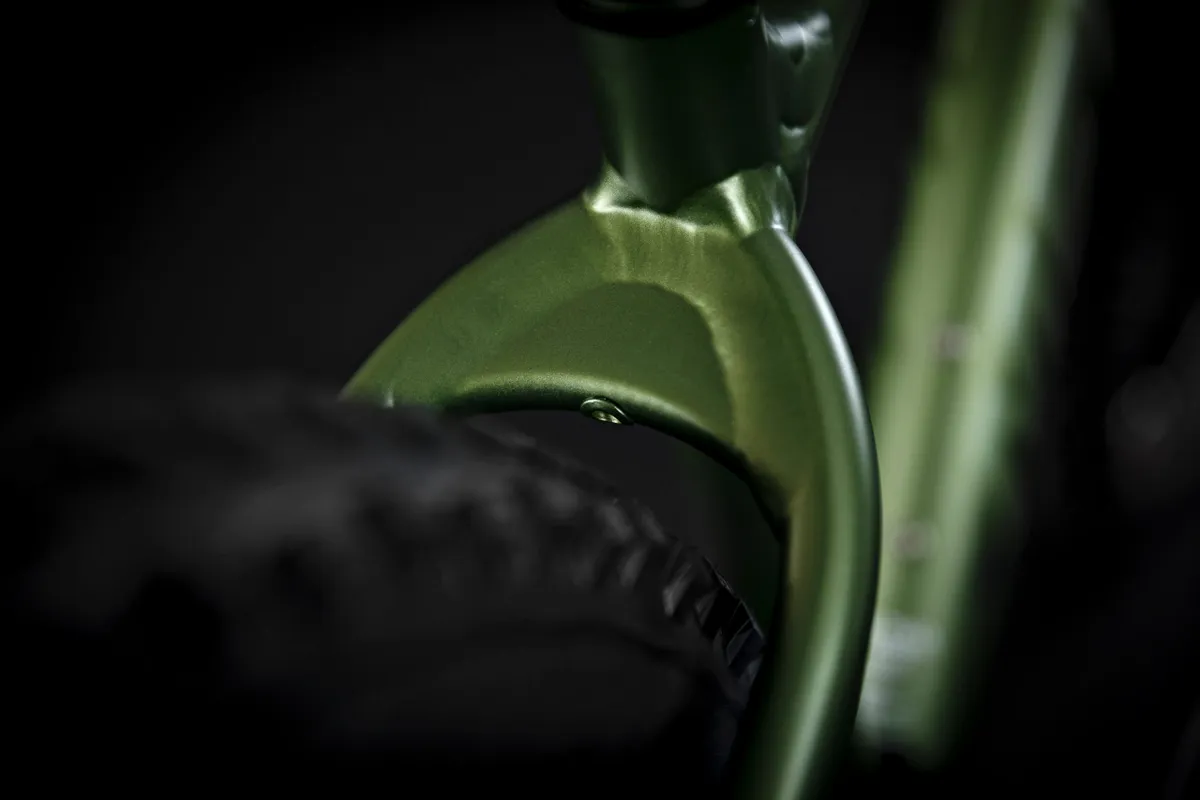
On that subject, the frameset also features hidden mudguard and rack mounts and, of all things, a kickstand mount.
These may seem out of place on a trail bike but, jest all you want – we won’t listen. You honestly can’t see these mounts unless you look closely and when has making a bike more versatile ever been a bad thing?
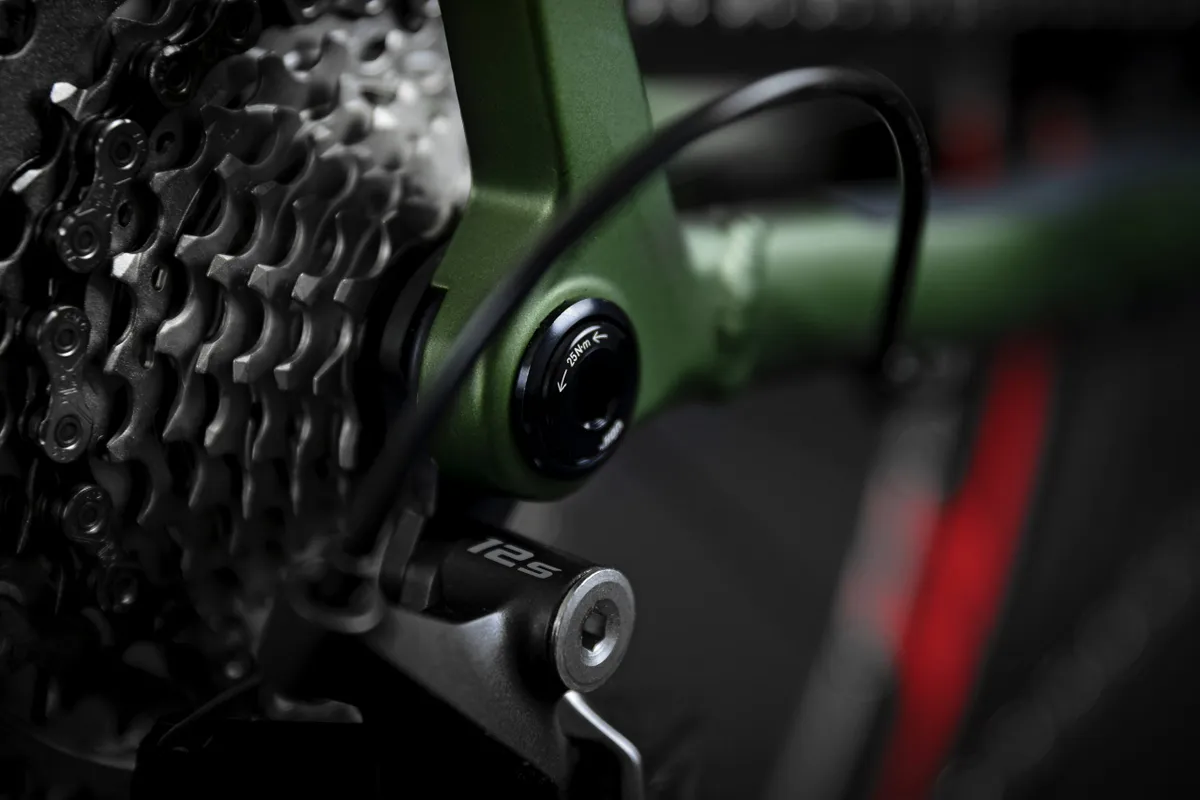
The bike is also one of the first we’ve seen to use SRAM’s universal derailleur hanger standard.
We’ve covered this in-depth in a standalone article but, in brief, this ‘standard’ means that, if you break your hanger, you should be able to walk into just about any bike shop and pick up a spare without worries about compatibility.
All cables enter the down tube just behind the down tube giving the bike a really clean look that belies its modest price.

We have the pictured top-end Merida Big.Trail 600 in for testing. As mentioned, this features Shimano’s latest Deore M6100 12-speed groupset, alongside a Marzocchi Z1 fork, Shimano BR-MT410 brakes and Maxxis Dissector tyres in an unspecified compound.
It shouldn’t matter but there’s no denying the green and red contrast is very eye-catching, with all of the red logos and highlights perfectly colour-matched to the fork.
At £1,500 / €1,599 / $2,299, the build is competitively-priced for a non-direct sale bike.
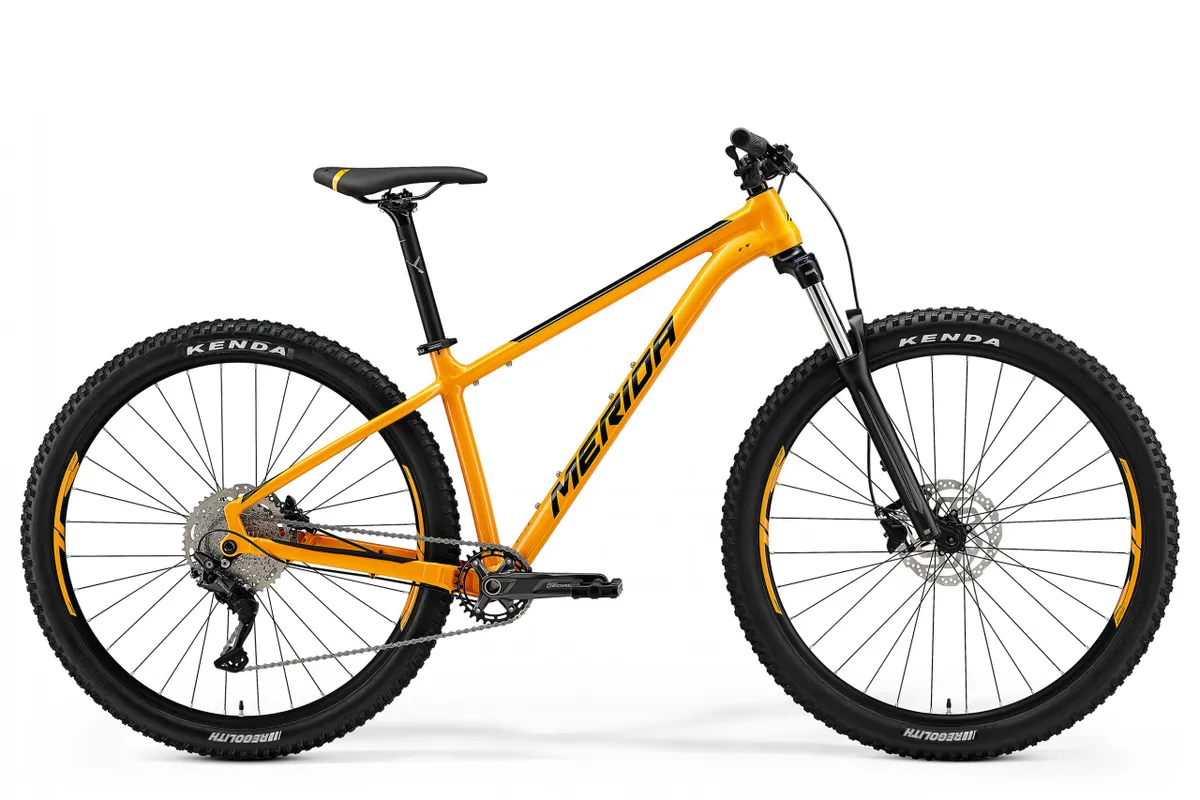
However, it’s the cheapest bike – the Merida Big.Trail 200 – that we think will be the big seller.
At just £800 / €849 / $1,249 and featuring a Shimano Deore 1x 10-speed groupset, bang-on-trend modern geometry and tubeless-ready wheels, we suspect this will be a very popular model.
Bikes in the UK, Europe and the US are available now with bikes shipping in Australia in September.

